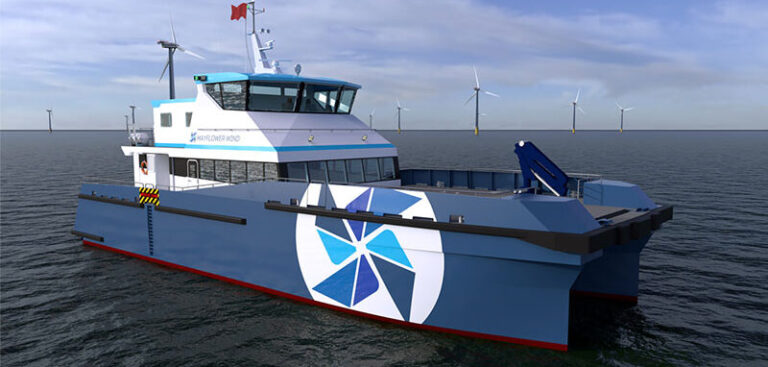Developer of deep-water offshore wind projects Mayflower Wind has signed an agreement with Gladding-Hearn Shipbuilding/Duclos Corporation of Somerset, Massachusetts, for the specification, design and manufacture of a hybrid diesel-electric crew transfer vessel (CTV).
A host of technologies will be applied to the CTV including lithium-ion battery energy storage to create a hybrid vessel capable of full electrification in the future. This will result in fuel savings and the reduction of emissions when carrying out maritime operations.
“Mayflower Wind aims to develop the most innovative, fuel-efficient CTV built in the USA,” commented Michael Brown, CEO, Mayflower Wind.
The recently signed agreement includes multiple companies from the marine industry such as Incat Crowther, BAR Technologies, Corvus Energy and ABS. The project will go ahead if Mayflower Wind is awarded the contract under the latest Massachusetts procurement for offshore wind.
“We are excited about the possibility of working with Mayflower Wind,” said Peter Duclos, president, Gladding-Hearn. “They want to raise the bar of CTV design and have assembled an experienced team to do just that.”
Each partner will bring experience from various maritime sectors, as the group seeks to develop a vessel capable of operating in a range of weather and ocean conditions. With Incat Crowther responsible for the design, the new vessel will be based on one of the company’s CTVs already in service in Europe.
ABS will provide design review for Approval in Principle (AiP) along with verification of applicable rules, standards and US Coast Guard regulations, and the eventual classification of the CTV.
BAR brings a Foil Optimized Stability System to ensure fuel savings and reduced vertical accelerations for improved safety and comfort. Furthermore, the company will utilize its CFD expertise to optimize the hull and its foils to reduce drag and fuel consumption. Lastly, Corvus will supply an onboard battery energy storage solution to enable efficient lower emission operation.
If the contract is awarded, the vessel will be designed during 2022 and 2023, ahead of a proposed launch in the middle of the decade.



